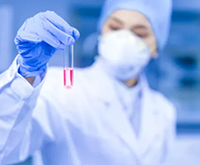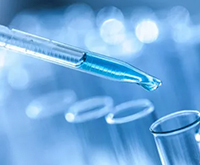Human IgG
Secondary antibodies are for the indirect detection of a target to which a primary antibody is first bound. The secondary antibody must have specificity both for the antibody species and the isotype of the primary antibody used. Also, a secondary antibody generally has a detectable tag or other label facilitating detection or purification.
Indirect detection of the target antigen using secondary antibodies requires more steps than direct detection using primary antibodies. However, the advantage of indirect detection is increased sensitivity due to the signal amplification from multiple secondary antibodies binding to a single primary antibody.
In addition, a given secondary antibody can be used with any primary antibody of the same type and host species, making it an infinitely more versatile reagent than individually labeled primary antibodies. Secondary antibodies with specificity for the primary antibodies of common species are commercially available pre-conjugated with many of the standard labels, including fluorescent and enzyme conjugate options
Human IgG Products
| Antibody | Application |
| Mouse anti-human IgG monoclonal antibody | For immunodiagnostic: ELISA, LFA, CLIA |
Human IgG Intro
Immunoglobulin G is the only Ig that can cross the placenta and plays a vital role in natural passive immunity. In addition, immunoglobulin G also has the functions of opsonophagocytosis, ADCC, and binding to SPA. Due to the above characteristics of immunoglobulin G, immunoglobulin G plays a significant role in the body's immune protection, and most antibacterial, antiviral, and antitoxin antibodies belong to the immunoglobulin G class of antibodies.
Antibody humanization is the process of increasing the ratio of human sequences in a heterologous antibody. The antibody humanization process solves the immunogenicity of heterologous monoclonal antibodies and improves the activation of antibodies on the human immune system. With the development of hybridoma technology, many heterologous (usually murine) antibodies with specific affinity for antigen have attracted people's interest, but the existence of the HAMA effect significantly limits the clinical application of these antibodies. Moreover, these heterologous antibodies often have short half-lives and can cause inflammatory effects in the body.
Human IgG Antibody
IgG antibody (immunoglobulin G) plays a role in activating complement and neutralizing various toxins in the immune response.
Humanization of antibodies using various strategies can essentially eliminate the immunogenicity of heterologous antibodies in the human body while retaining the specificity of the antibodies. These include reconstituted antibodies, chain replacement antibodies, and surface remodeling antibodies. By establishing a phage-displayed humanized mutation library, high-affinity humanized antibodies can be screened. Humanized antibodies can also be set by mammalian cell surface display technology. The IgG library was screened by FACS classification.
IgG
B lymphocytes are transformed into plasma cells under antigen stimulation and produce antibodies that bind specifically to the corresponding antigen, called immunoglobulins. Immunoglobulin G (IgG) is the main component of immunoglobulins in serum, accounting for about 75% of the total immunoglobulin content in serum. There are four subtypes of IgG, namely IgG1, IgG2, IgG3, and IgG4. IgG is the most important antibody in the body, with anti-virus, virus neutralization, antibacterial, and immune regulatory functions. IgG is also the only antibody that can cross the placenta and plays a vital role in neonatal resistance to infection. Some autoantibodies, such as factor LE in systemic lupus erythematosus and anti-thyroglobulin antibodies, are also IgG. The most commonly used methods for detecting IgG content in serum are the one-way immunodiffusion method and immunoturbidimetric method, but the latter has gradually replaced the former.


















